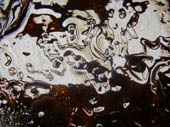
Purpose
To replicate the effects of an oil spill and apply an effective system to clean it up.
Additional information
An oil spill occurs when liquid petroleum hydrocarbon is released into the environment due to human error. This form of pollution can take months, even years to effectively clean from the environment. The effects can be devastating, especially to birds and amphibious life that's effected by oceanic spills. Birds that are exposed to the ravages of an oil spill are prone to kidney damage, liver malfunction, dehydration, and metabolic imbalances. Unless human intervention is applied, most bird exposed to oil spills die.
One of the most devastating oil spills occurred in 1989 in Prince William Sound, Alaska. The Exxon Valdez oil tanker was carrying 53 million gallons of crude oil to Washington when it struck Bligh Reef. Over 10 million gallons of crude was released into the pristine sea of Prince William Sound, covering over 11,000 square miles of ocean.
There are several methods currently available to clean up oil spills. These include:
- Boats equipped with skimmers designed specifically for skimming oil from water surfaces
- Dispersants, a special chemical that works like a detergent to help break up oil so that bacteria and other natural organisms in the ocean can digest it
- Burning off the oil (which in itself leads to other environmental concerns)
- Sorbents that are used to soak up the oil
Sponsored Links
Required materials
- Small piece of aluminum foil
- Vegetable oil (or other suitable cooking oil)
- Deep baking dish
- Water
- Several cotton balls
Estimated Experiment Time
About 15 minutes
Step-By-Step Procedure
- 1. Pour water into the baking dish so it's about 1/2 full
- 2. Shape the piece of foil into a small canoe or boat, roughly the size of your thumb.
- 3. Fill your canoe with the cooking oil and place it on top of the water in the baking dish
- 4. When you want to create your "oil spill", tip the canoe over
- 5. Wait a few minutes as the oil contaminates the water and begins to spread
- 6. Now it's time to clean up the mess. Use your cotton balls to soak up the oil by placing the cotton over the contaminated areas.
Note
You'll find it will take a LOT of cotton balls to soak up that small amount of oil that was spilled into the water. Imagine the effect of millions of gallons of oil being spilled into the ocean and how much effort would be required to "absorb" it all.
Observation
You'll note that the oil stays on the surface of the water and begins to dissipate at an almost exponential level. If you were to mimic rough waters, the oil would spread at a greater pace. What other methods to you suppose we could have used to clean up this spill? What do you think would be the hardest to clean up in the case of an oil spill, an ocean, lake, or river?
Result
The cotton ball fibers absorb the oil from the water, but also take a lot of water along with it. The number of cotton balls required to clean up that small amount of oil is staggering! If you were to try to clean the spill with something such as a ladle (to replicate skimming) you'd find you'd have even greater difficulty cleaning it.
Sponsored Links
Take a moment to visit our table of Periodic Elements page where you can get an in-depth view of all the elements,
complete with the industry first side-by-side element comparisons!